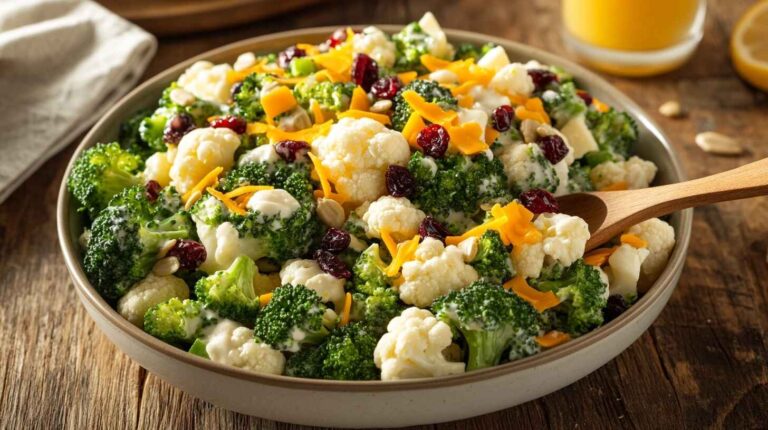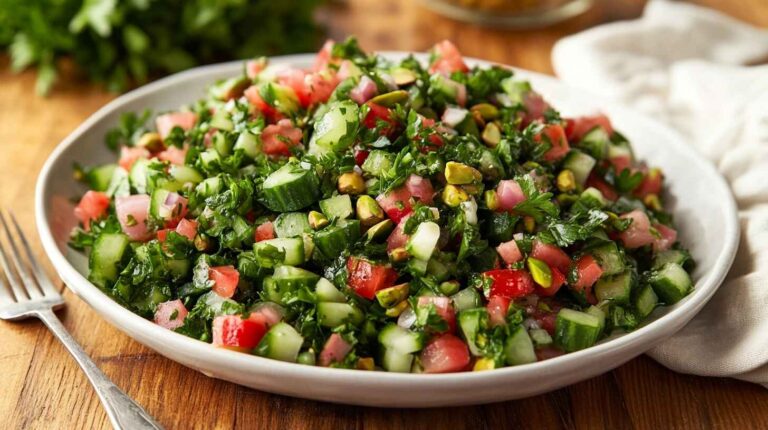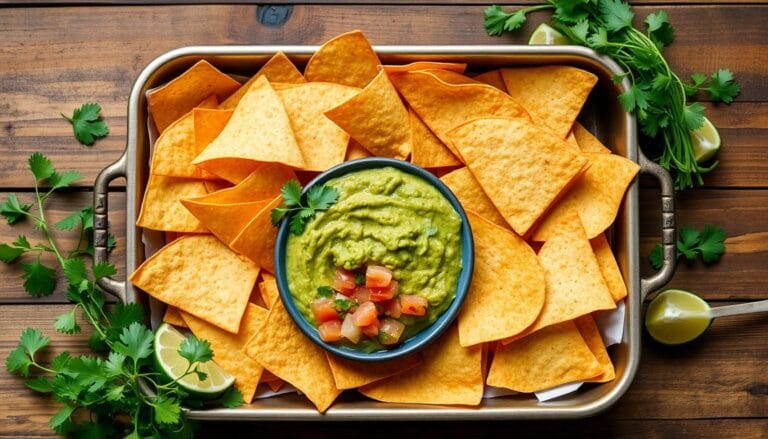Table of Contents
If you’re a fan of gooey, stretchy mozzarella cheese but have gluten sensitivity or celiac disease, the big question that often comes to mind is: Is mozzarella cheese gluten free?
Gluten can be tricky—it hides in places you wouldn’t expect, and for people who can’t tolerate it, even small amounts can wreak havoc on their health. Mozzarella cheese is naturally gluten-free, but hidden gluten in processed options can be a concern. Let’s explore safe mozzarella options for a gluten-free diet! Let’s dive in to get a clear answer!
Introduction to Mozzarella Cheese
Mozzarella is one of the most loved cheeses across the world. From being melted on top of pizzas to added in fresh salads, it’s hard to resist this creamy delight. But before we find out whether it’s gluten-free, let’s learn a little about its origins and how it’s made.
What is Mozzarella Cheese?
Mozzarella is an Italian cheese traditionally made from buffalo milk, although cow’s milk is widely used today. It’s famous for its soft texture and mild, milky flavor that complements a variety of dishes.
One of its unique qualities is how it’s served fresh—soft mozzarella balls soaked in brine or water. You’ll also find shredded, block, and string mozzarella in supermarkets. Each type has its charm, whether it’s adding stretch to a pizza or creaminess to lasagna.
History and Origins of Mozzarella Cheese
Mozzarella cheese dates back to ancient Italy, specifically Naples, where it was first created using buffalo milk. Its name comes from the Italian word “mozzare,” which means “to cut.” This refers to how the cheese curds are cut and stretched during production.
Back then, mozzarella was a luxury, enjoyed only by the elite. Today, it’s loved globally and has even made its way into gluten-free diets.
How Mozzarella Cheese is Made
Here’s the magic of mozzarella production:
- Fresh milk is curdled using rennet (an enzyme).
- The curds are separated from the whey.
- These curds are heated and stretched repeatedly until they become elastic and smooth.
- Finally, the cheese is shaped into balls, blocks, or strings and preserved in brine or vacuum-sealed packaging.
Traditional mozzarella uses only milk, rennet, and salt, which makes it naturally gluten free. But modern production sometimes introduces additives that might pose problems for people avoiding gluten. We’ll discuss this in more detail soon.
Understanding Gluten and Gluten Sensitivity
Before we jump to the gluten-free status of mozzarella, let’s clarify what gluten is and why it’s problematic for many.
What is Gluten?
Gluten is a protein found in grains like wheat, barley, and rye. It gives bread its chewy texture but can harm individuals with gluten sensitivity or celiac disease. Gluten is harmless for most people, but for others, it’s a real villain.
Gluten Intolerance vs. Celiac Disease
It’s essential to distinguish between two major gluten-related conditions:
- Gluten Sensitivity (Non-Celiac): People experience discomfort like bloating, headaches, or fatigue after consuming gluten.
- Celiac Disease: This is an autoimmune condition where gluten damages the small intestine lining. Even tiny amounts can trigger severe symptoms like diarrhea, weight loss, and malnutrition.
Celiac patients must avoid gluten entirely, and this means scrutinizing every single food—including mozzarella cheese!
Why Gluten Matters for Some People
For anyone living gluten-free, accidental exposure to gluten can be life-altering. Think of gluten as a hidden enemy—it sneaks into sauces, seasonings, and even cheese products. This is why identifying whether a food is gluten-free is a game-changer.
Is All Mozzarella Cheese Safe for a Gluten-Free Diet?
Now, let’s tackle the main question: Is mozzarella cheese gluten free? The short answer is yes—traditional mozzarella is naturally gluten free. 🎉
Ingredients in Traditional Mozzarella Cheese
Authentic mozzarella uses just a few ingredients:
- Milk (buffalo or cow)
- Rennet
- Salt
- Sometimes citric acid for acidity balance
These ingredients are completely gluten-free. However, that’s not always the case for store-bought mozzarella, and here’s why.
Common Problems: Gluten Contamination in Mozzarella Cheese
You might be wondering: if mozzarella is gluten-free by nature, where’s the problem? Well, gluten contamination can occur in a couple of sneaky ways.
Cross-Contamination During Production
Manufacturing facilities that produce mozzarella often also handle gluten-containing foods. Shared equipment, tools, or surfaces can cause cross-contamination. Even trace amounts of gluten can be dangerous for someone with celiac disease.
💡 Pro Tip: Always look for mozzarella labeled “Certified Gluten-Free” to minimize this risk.
Are Additives and Preservatives a Concern?
While traditional mozzarella has simple ingredients, pre-shredded or processed mozzarella often includes additives to improve shelf life or prevent clumping. Here’s what to watch out for:
- Anti-Caking Agents: Some of these may contain gluten-based starches.
- Flavorings or Seasonings: Gluten could sneak in through artificial flavors.
- Fillers: Cheap fillers might use wheat-based binders.
👉 Always check the label to confirm the product is gluten-free. Look for “no gluten ingredients” or a “certified gluten-free” seal.
Block Quote:
“For individuals with gluten sensitivity, mozzarella cheese can still be a safe and delicious option—as long as you know what to look for.” 🧀

How Do You Ensure Your Mozzarella is Gluten-Free? Let’s Find Out!
To make life easier, here are a few tips for choosing gluten-free mozzarella:
- Read the Ingredients List: Stick to mozzarella with simple, natural ingredients.
- Look for Certification: “Certified Gluten-Free” labels ensure rigorous testing for gluten content.
- Research Brands: Some companies specialize in gluten-free dairy products.
In the next section, I’ll share a list of gluten-free mozzarella brands and explore recipes you can enjoy worry-free!
Gluten-Free Mozzarella Cheese: Popular Brands to Consider

If you’re living a gluten-free lifestyle, picking the right brand of mozzarella cheese is crucial. Not all cheese is created equal, and some can have hidden gluten from additives or cross-contamination. So, which brands can you trust? Let’s explore!
Top Gluten-Free Mozzarella Cheese Brands
The good news is that many reputable brands offer mozzarella cheese that’s certified gluten-free or naturally gluten-free. Here are some top picks:
- Galbani Mozzarella
- Known for its traditional Italian taste, Galbani offers a wide variety of mozzarella options, including fresh, block, and shredded cheese. Most are gluten-free and safe for sensitive individuals.
- Organic Valley Mozzarella
- Organic Valley produces clean, organic cheese without unnecessary additives. Their mozzarella uses simple ingredients, making it naturally gluten-free.
- Sargento Shredded Mozzarella
- Sargento’s shredded cheese is a household favorite. While not all their products are certified gluten-free, they state gluten-free status clearly on the label.
- BelGioioso Fresh Mozzarella
- This brand offers high-quality fresh mozzarella made with simple ingredients. It’s perfect for gluten-free salads, pizzas, and more.
- Kraft Natural Mozzarella
- Kraft’s shredded mozzarella cheese doesn’t contain gluten ingredients, but always double-check the label for safety.
How to Verify Certification and Ingredients
Even with trusted brands, it’s important to verify the product is gluten-free. Here’s how:
- Look for the Gluten-Free Certification Label: Certifications from organizations like the Gluten-Free Certification Organization (GFCO) ensure that products contain less than 20 ppm of gluten.
- Check the Ingredients List: Avoid products with vague terms like “modified food starch” unless it specifies it’s gluten-free.
- Contact the Manufacturer: When in doubt, contact the company directly to confirm gluten-free status.
👉 Remember: Fresh mozzarella balls are usually safer than pre-shredded versions because they don’t contain anti-caking agents.
Using Mozzarella Cheese in a Gluten-Free Diet

Now that you know which mozzarella cheeses are gluten-free, let’s talk about incorporating them into your diet. Mozzarella cheese isn’t just for pizza—it’s incredibly versatile and can fit perfectly into a variety of gluten-free recipes.
Gluten-Free Mozzarella Recipes
Here are some delicious, easy-to-make recipes featuring mozzarella cheese for your gluten-free lifestyle:
- Gluten-Free Caprese Salad 🥗
- Ingredients: Fresh mozzarella, ripe tomatoes, basil leaves, olive oil, balsamic vinegar, and a pinch of salt.
- Instructions: Layer mozzarella slices and tomatoes, add fresh basil, drizzle olive oil and balsamic vinegar, and season.
- Perfect for a light, refreshing lunch!
- Gluten-Free Margherita Pizza 🍕
- Ingredients: Gluten-free pizza crust, fresh mozzarella, tomato sauce, fresh basil, and olive oil.
- Instructions: Spread tomato sauce over the gluten-free crust, top with mozzarella slices, bake until bubbly, and add fresh basil before serving.
- Tip: Use certified gluten-free crust to ensure safety.
- Mozzarella-Stuffed Gluten-Free Meatballs 🍖
- Ingredients: Ground beef, gluten-free breadcrumbs, egg, herbs, and mozzarella cubes.
- Instructions: Mix ground beef with breadcrumbs, egg, and herbs. Wrap the mixture around mozzarella cubes, bake, and serve with gluten-free pasta or veggies.
- Cheesy Gluten-Free Mozzarella Sticks 🧀
- Ingredients: Mozzarella cheese sticks, gluten-free flour, eggs, and gluten-free breadcrumbs.
- Instructions: Dip mozzarella sticks in flour, egg, and breadcrumbs. Fry or bake until golden brown and gooey.
Pairing Mozzarella Cheese with Other Gluten-Free Foods
Mozzarella pairs beautifully with many naturally gluten-free foods. Here are some tasty pairings:
- Fruits and Nuts: Fresh mozzarella with figs, apples, or grapes adds a perfect balance of sweet and savory.
- Vegetables: Use mozzarella in baked eggplant parmesan, zucchini boats, or stuffed bell peppers.
- Gluten-Free Grains: Pair mozzarella with quinoa, rice, or gluten-free pasta for a hearty meal.
Fun Fact: Mozzarella cheese’s mild flavor makes it a great addition to almost any gluten-free dish!
Common FAQs About Mozzarella Cheese and Gluten
To clear up any lingering doubts, here are answers to some of the most frequently asked questions about mozzarella cheese and gluten.
Is All Cheese Gluten Free?
No, not all cheese is gluten-free. While natural cheeses (like mozzarella, cheddar, or gouda) are gluten-free, processed cheeses can contain gluten-based additives. Always check the label for safety.
Can Mozzarella Cheese Cause Gluten Reactions?
Traditional mozzarella cheese shouldn’t cause gluten reactions because it doesn’t naturally contain gluten. However, if mozzarella is contaminated during production or includes gluten-based additives, it can trigger symptoms in sensitive individuals.
Solution: Look for certified gluten-free labels and avoid pre-shredded or processed cheese unless verified gluten-free.
Block Quote:
“When in doubt, remember that fresh, high-quality mozzarella is your safest bet for a gluten-free diet. Simple ingredients are always your best friend!”
How to Store Gluten-Free Mozzarella Cheese?
Proper storage ensures your mozzarella stays fresh and delicious. Here’s how to store it:
Fresh Mozzarella: Keep it submerged in its brine or water and store in the refrigerator. Use within 3-5 days for best quality.
Shredded Mozzarella: Store in an airtight bag or container in the refrigerator.
Freezing Mozzarella: You can freeze mozzarella blocks or shredded cheese, but the texture may change slightly upon thawing.
Tip: Fresh mozzarella is always better when consumed fresh—so don’t let it sit too long in the fridge!
Solutions for People with Gluten Sensitivity
If you’re gluten-sensitive, mozzarella can still be a part of your diet with some simple strategies to avoid gluten exposure.
How to Avoid Gluten Exposure in Dairy Products
- Choose Trusted Brands: Stick to companies that certify their products as gluten-free.
- Avoid Cross-Contamination: Keep gluten-containing products away from your mozzarella during food prep.
- Cook at Home: Homemade meals allow you to control ingredients and reduce the risk of gluten exposure.
Choosing Certified Gluten-Free Products
Certification gives peace of mind. Look for products tested to contain less than 20 ppm of gluten. Some trusted gluten-free certifications include:
- Gluten-Free Certification Organization (GFCO)
- Celiac Support Association Seal
This guide provides practical tips to safely enjoy mozzarella while managing gluten sensitivity. Always prioritize simple, fresh ingredients for the best experience!
Gluten-Free Mozzarella Cheese: A Safe and Delicious Choice
So, where does that leave us? Is mozzarella cheese gluten-free or not?
The Bottom Line
Yes! Traditional mozzarella cheese is naturally gluten-free because it’s made using milk, salt, and rennet—simple ingredients without any gluten.
However, there are exceptions to this rule:
- Processed Mozzarella: Additives or fillers might contain gluten.
- Cross-Contamination: Shared facilities and equipment can pose a risk.
To keep mozzarella safely in your diet, stick to these key rules:
- Choose fresh, natural mozzarella over processed varieties.
- Look for gluten-free certifications on labels.
- Avoid shredded mozzarella unless it’s labeled gluten-free.
Conclusion: Is Mozzarella Cheese Safe for a Gluten-Free Lifestyle?
To wrap it all up, mozzarella cheese can absolutely be part of a gluten-free lifestyle as long as you’re vigilant. Whether you’re sprinkling mozzarella over a homemade pizza, adding it to a Caprese salad, or melting it on top of gluten-free pasta, this versatile cheese is both safe and delicious for gluten-sensitive individuals.
Key Takeaways 🧀
- Fresh mozzarella with simple ingredients is naturally gluten-free.
- Processed mozzarella may contain additives—always check the label.
- Look for certified gluten-free products to avoid cross-contamination.
- When dining out, ask questions to ensure your food is gluten-free.
Block Quote:
“Living gluten-free doesn’t mean sacrificing flavor. Mozzarella cheese can still add that creamy, stretchy magic to your favorite dishes—just choose wisely!”
Final Words:
If you’ve been avoiding mozzarella cheese because of gluten concerns, you can breathe a little easier. By choosing trusted brands, reading labels carefully, and opting for fresh versions when possible, you can enjoy mozzarella cheese guilt-free.
Now, grab some gluten-free crackers, toss in fresh tomatoes, and savor that mozzarella magic—your gluten-free journey just got a whole lot tastier! 🍕🥗
Print
Is Mozzarella Cheese Gluten-Free? A Guide to Safe Mozzarella Options
- Total Time: 10 minutes
- Yield: 2 servings 1x
- Diet: Gluten Free
Description
This Gluten-Free Caprese Salad is a fresh and delicious dish featuring gluten-free mozzarella, ripe tomatoes, and basil. It’s the perfect light appetizer or side dish, full of natural flavors and healthy ingredients.
Ingredients
- 250g fresh mozzarella (certified gluten-free)
- 3 ripe tomatoes, sliced
- A handful of fresh basil leaves
- 2 tbsp extra virgin olive oil
- 1 tbsp balsamic vinegar
- Salt and freshly ground black pepper, to taste
Instructions
- Prepare the Ingredients: Slice the mozzarella and tomatoes into even pieces.
- Assemble the Salad: Arrange alternating layers of tomato and mozzarella slices on a serving plate.
- Add Basil: Sprinkle fresh basil leaves over the top.
- Drizzle Dressing: Drizzle the olive oil and balsamic vinegar evenly over the salad.
- Season to Taste: Add salt and freshly ground black pepper.
- Serve Fresh: Enjoy immediately for the best taste and texture.
Notes
- For extra flavor, use aged balsamic glaze instead of vinegar.
- If avoiding balsamic vinegar, substitute with lemon juice for a refreshing twist.
- Pairs well with gluten-free bread or crackers for a more filling meal.
- Prep Time: 10 minutes
- Cook Time: 0 minutes
- Category: Salad
- Method: No-cook
- Cuisine: Italian
Nutrition
- Serving Size: 1 plate (approx. 200g)
- Calories: ~220 kcal
- Sugar: 3g
- Sodium: 250mg
- Fat: 18g
- Saturated Fat: 7g
- Unsaturated Fat: 10g
- Trans Fat: 0g
- Carbohydrates: 5g
- Fiber: 1g
- Protein: 12g
- Cholesterol: 35mg







